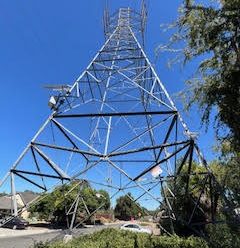I received this information from a local roofing contractor that I have used numerous times. It comes from Rich Cosmos of Cosmos Roofing and it discusses roof and gutter maintenance. Since we already have had one wet rain storm, it might be a good time to take a look at your own roof and gutter system and prepare it for the rainy season.
Annual Roof and Gutter Checkup –
All roofs and gutters should be checked annually, preferably in September/October before the rainy season is fully upon us. With trees growing around many houses, the house movement we experience on the adobe soil in this area of the country, and the general wear and hardening of sealants suggest a general inspection of the roof and before the rains. Gutters and different roof types require varying amounts of maintenance.
Gutters and Downspouts –
Tree debris is the major cause of gutter and downspout failure. Tree debris blocking the water flow, either in gutters or the downspouts will cause damage by rotting out the wood in back of the gutter. Additionally, with steel gutters the tree debris will create an acid with the water (this will also happen with wood roofs due to the tannic leached from the fire-retardant chemicals used) and erode the steel. Aluminum gutters will not erode but have a tendency to sag since aluminum gutters are not as strong as steel. Most 1st story gutters can be checked easily and easily cleaned. A garden hose can be used from the top, inside the gutter to clear out clogged downspouts. In extreme cases, a metal snake can be used. Seams and corners should be observed/checked during the first rains for leakage. Leaks can be fixed or retarded with caulking, however, long-term you may have to call a professional for repair. I use my leaf blower to get the debris out of the gutters.
Pitched Roofing Surfaces –
Most pitched roofing surfaces will shed tree debris and are readily visible for roof wear. Most tree debris will collect in the valleys near the bottom of the roof, however, some may collect in back of chimneys, skylights and any other large protrusions on the roof. Tree debris can easily cause water back up in the valleys resulting in leaking in the interior of the house and dry rotted wood damage, especially with tile and wood shake roofs. Valleys are fairly easy to clean of any kind of debris.
Flat Low – Pitched Roofs –
Flat/low-pitched roofs are the most problematic for any kind of debris buildup, however, they are the easiest type to get on top and clean. Any accumulation of debris both on the roof and in the downspouts can cause immediate leaking and extensive roof and house damage. We have observed over the years with flat roofs that have extensive tree debris have weed gardens growing on their roofs during the rainy season! This is obviously not good. Different roof types fair differently with respect to this debris problem. With sprayed on foam roofs the elastomeric coating can erode quickly due to the acid formed with the tree debris and rain water.





